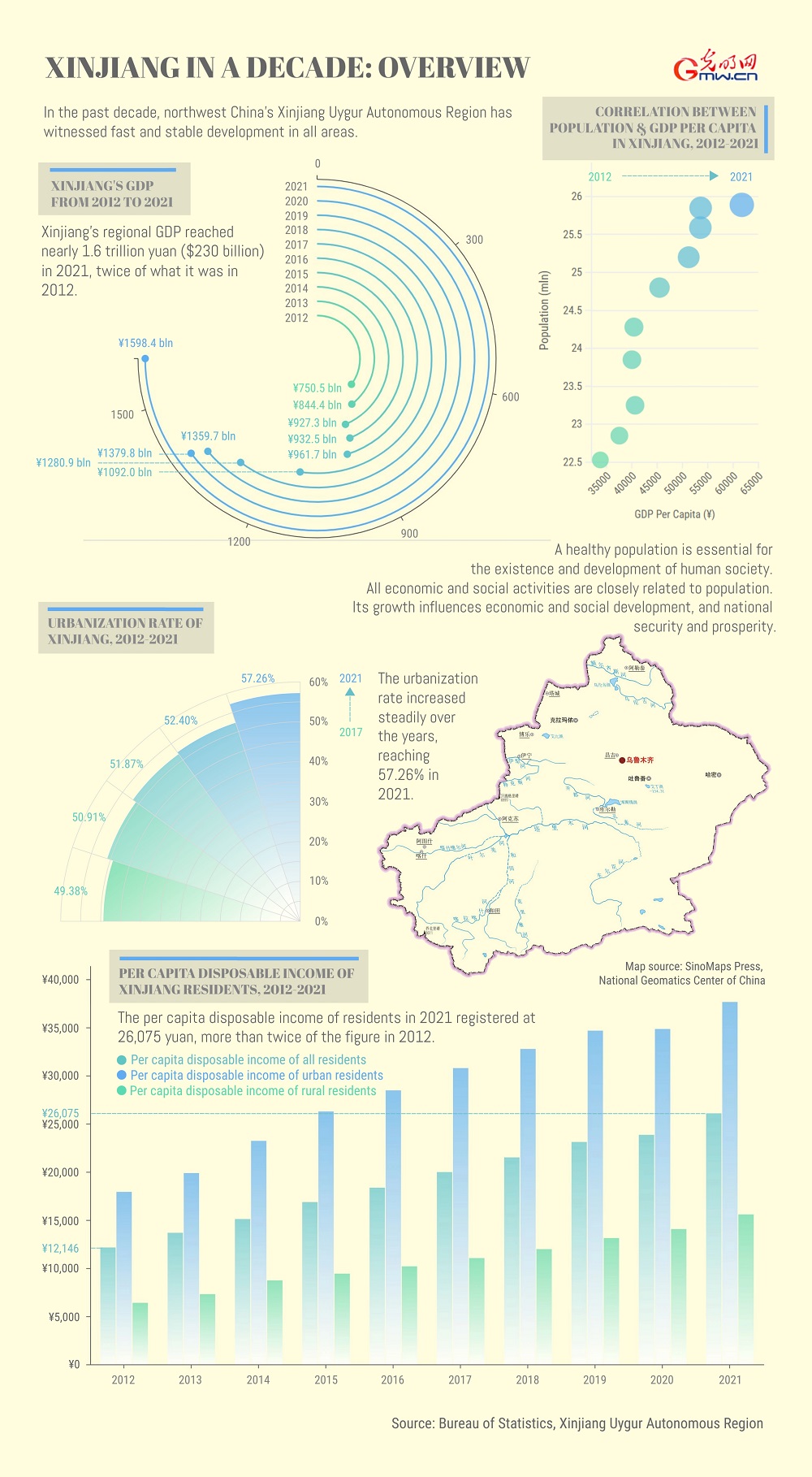

By Wang Xinyuan
Under the strong leadership of the CPC Central Committee with Comrade Xi Jinping at its core, Xinjiang Uygur Autonomous Region has adhered to the Xi Jinping Thought on Socialism with Chinese Characteristics for a New Era, and has followed through the Party’s strategy for governing Xinjiang in the new era.
Since the 18th CPC National Congress, northwest China's Xinjiang Uygur Autonomous Region has witnessed fast and stable development in all areas over the past decade. Here is an overview.

GDP growth in Xinjiang
Xinjiang's GDP reached nearly 1.6 trillion yuan ($230 billion) in 2021, twice what it was in 2012; GDP per capita in 2021 reached 61,725 yuan, nearly doubling the figure of 33,909 yuan in 2012.
Back in 2012, added value of the primary industry was 132.057 billion yuan; added value of the secondary industry was 356.075 billion yuan; added value of the tertiary industry was 264.9 billion yuan.
While in 2021, added value of the first industry reached 235.606 billion yuan, up 7.9% year on year; added value of the second industry hit 596.736 billion yuan, up 6.7% year on year; added value of the tertiary industry amounted to 766.023 billion yuan, a year-on-year increase of 6.9%. Contribution of the three industries to GDP respectively stood at 14.7%, 37.4%, and 47.9%.
Population growth in Xinjiang
A healthy population is essential for the existence and development of human society. All economic and social activities are closely related to population. Its growth influences economic and social development, and national security and prosperity.
Over the past decade, the population in Xinjiang has grown from 22.53 million in 2012 to 25.89 million in 2021. All of China's 56 ethnic groups can be found in Xinjiang, with Uygur, Han, Kazak and Hui the largest groups. The ethnic groups generally choose to live among each other, while some live in concentrated communities of their own.
Urbanization in Xinjiang
Urbanization rate increased steadily over the years, reaching 57.26% in 2021.
Xinjiang is promoting people-oriented urbanization and will realize basic urbanization by 2035. A group of emerging cities will grow, and the cities will expand and gather more people, according to the white paper titled “Xinjiang Population Dynamics and Data”.
Disposable income of residents in Xinjiang
The per capita disposable income of residents in 2021 reached 26,075 yuan, more than twice the figure in 2012; urban residents had a per capita disposable income of 37,642 yuan in 2021, compared with 17,921 yuan in 2012; rural residents had a per capita disposable income of 15,575 yuan in 2021, compared with 6,394 yuan in 2012.
In the future, Xinjiang will enjoy a more stable and harmonious society and a more prosperous economy. It will guarantee fuller employment, ensure equal access to public services, and establish a sound and multitiered social security system, so that all people in the region will lead better lives and have a stronger sense of fulfillment, happiness and security.
点击右上角![]() 微信好友
微信好友
 朋友圈
朋友圈

请使用浏览器分享功能进行分享
